Walruses are large marine mammals that live in the Arctic and subarctic. There are three different subspecies of this mammal that live in three different regions. It is easy to distinguish these large creatures from seals and sea lions by their long tusks. In fact, they are the third largest species in the pinniped (seal, sea lion, and walrus) family, behind two species of elephant seals. Read on to learn about the walrus.
Description of the Walrus
These blubbery marine mammals can really pack on the pounds! Adult male walrus can weigh upwards of 4,400 lbs. and measure over 11 ft. long. One exceptionally large specimen was 16 ft. long and approximately 5,000 lbs. or more!
This species’ primary distinguishing characteristic, their long tusks, can measure over 3 ft. long. Nearby, sprouting from the lips, is a thick, bushy mass of whiskers. These whiskers, called vibrissae, help the them feel for prey in murky waters.
Interesting Facts About the Walrus
Just about everyone can recognize these creatures by their long tusks and blubbery bodies. However, not many people know much more about walruses. Learn what makes these animals so interesting below!
- Sexually Dimorphic– Walruses are sexually dimorphic, which means you can tell the difference between males and females by looking at them. Male walruses can weigh over 1,000 lbs. more than females, and are generally much larger than their female counterparts.
- Tusky Business – However, tusks are not a sexually dimorphic feature on this species. Both male and female walruses have tusks! The tusks of male animals tend to be longer and thicker than on the females.
- Toothy Tusks – Surprisingly, these tusks are no more than very long teeth! The canine teeth of a walrus grow much longer and larger than the vast majority of other animals, creating the tusks you see protruding from the mouth. Narwhal tusks are also extended
- Tooth-Pick – The tusks of a walrus actually have a very important function. Everyone knows that it is extremely difficult to climb out of water onto ice, which is why thin ice is so dangerous if you fall in. Imagine trying to climb out if you weigh thousands of pounds! They use their tusks to haul themselves out of the water and onto the ice safely by digging them into the slippery surface of the ice.
Habitat of the Walrus
Walruses live in a frigid and unforgiving Arctic wilderness. Their habitats must be shallow, as they feed along the sea floor and cannot dive to exceptional depths like some other pinnipeds.
These marine mammals live in shallow seas and haul out on nearby ice floes to rest. Because they have limited habitats that they can occupy, they will often congregate in large numbers to take advantage of preferred areas.
Distribution of the Walrus
The three different subspecies live in different regions, but all walruses live in Arctic and subarctic waters. The Atlantic walrus lives in the Arctic waters of the Atlantic Ocean. Conversely, the Pacific walrus lives in Artic waters of the Pacific Ocean. Finally, the Laptev walrus lives in the Laptev Sea in the Arctic Ocean. The populations of Atlantic and Laptev walruses are more fragmented, and hunting has reduced their range.
Diet of the Walrus
These large creatures feed on a wide variety of sea creatures, mostly found along the seafloor. They cannot dive very deep, but they can hold their breath for half an hour while searching for food. Their favorite food is clams and other mollusks, and they use powerful suction to pull the clams from their shells.
Some other prey includes shrimp, sea cucumbers, tube worms, crabs, and soft corals. Walruses use their sensitive whiskers to feel along the seafloor for food.
Walrus and Human Interaction
Historically, humans have hunted these animals extensively for their blubber and tusks. Nowadays, native peoples can conduct traditional hunting, and there are regulations surrounding other hunts. The introduction of commercial hunting decimated walrus populations, and some subspecies have not fully recovered from this practice.
Indirectly, humans have influenced global climate change. Because walruses rest and give birth on the pack ice, the reduction of this ice is endangering their survival. Though currently Vulnerable, walruses do face additional decline as climate change continues to intensify.
Domestication
Humans have not domesticated walruses in any way.
Does the Walrus Make a Good Pet
No, walruses do not make good pets. They are much too large to house easily, and their enclosures and water must be temperature controlled. It is also illegal in most places to own one as a pet.
Walrus Care
In zoos, walruses require a number of conditions to thrive. They must live in large enclosures with temperature-controlled water. Their diet should be as close to their wild counterparts as possible. This usually includes fish, clams, mussels, and other shellfish.
They are also very intelligent, and do well learning with positive reinforcement. Zookeepers can train them to do a variety of behaviors, including voluntarily giving blood, and standing on a scale to measure their weight.
Behavior of the Walrus
These marine mammals congregate in large numbers on ice floes. They will reproduce in huge rookeries, and haul out of the ice together to rest. However, they usually forage for food alone, and do not work together while hunting in any way. Hunting occurs during the day, which makes them diurnal. They spend their time swimming along the bottom using their whiskers to feel for prey.
Reproduction of the Walrus
The walrus breeding season runs from January through March, and they will congregate in large numbers during this time. Males become very loud and vocal during this time, and the loudest males are the most dominant.
After mating, females give birth 15 – 16 months later. They have delayed implantation, and the embryo does not begin to develop until 3 – 4 months after mating. The calves will nurse from their mothers for a year or more, and can remain with their mothers as long as 5 years.
Beliefs, Superstitions, and Phobias About the Walrus
As you might expect, walruses are present in a number of different tales and religions of the native people of the Arctic. One myth tells of a walrus-headed woman who rules the sea floor, another connects the creation of the walrus with a girl being thrown from a cliff into the sea. These tales are prevalent throughout the culture of the Inuit, Chukchi, and other native people.

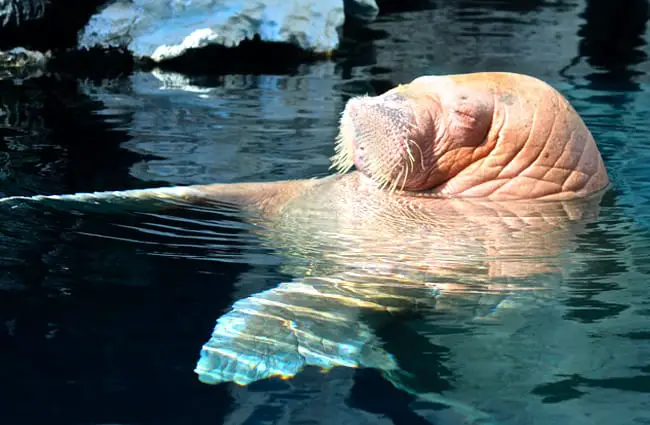
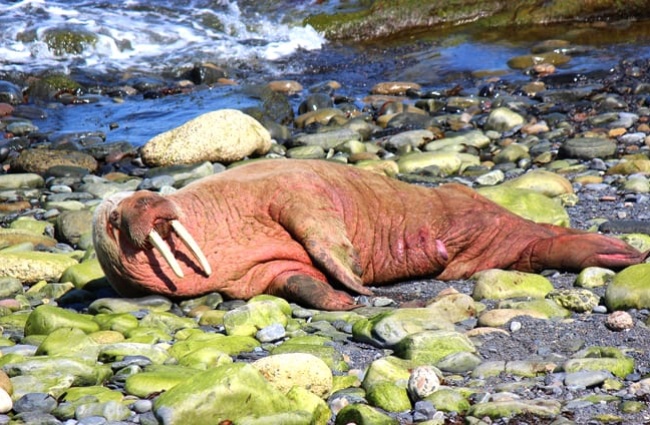
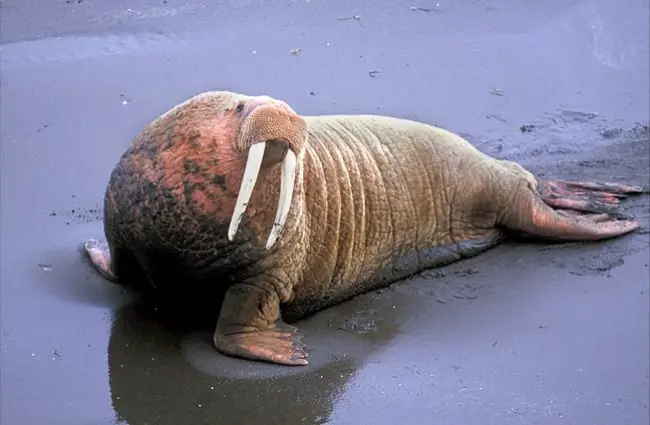




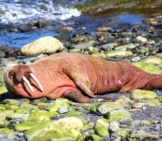


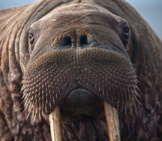
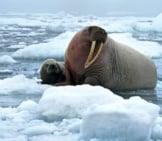
![Red Angus Closeup of a beautiful Red Angus cowPhoto by: U.S. Department of Agriculture [pubic domain]https://creativecommons.org/licenses/by/2.0/](https://animals.net/wp-content/uploads/2020/03/Red-Angus-4-238x178.jpg)












![Red Angus Closeup of a beautiful Red Angus cowPhoto by: U.S. Department of Agriculture [pubic domain]https://creativecommons.org/licenses/by/2.0/](https://animals.net/wp-content/uploads/2020/03/Red-Angus-4-100x75.jpg)

